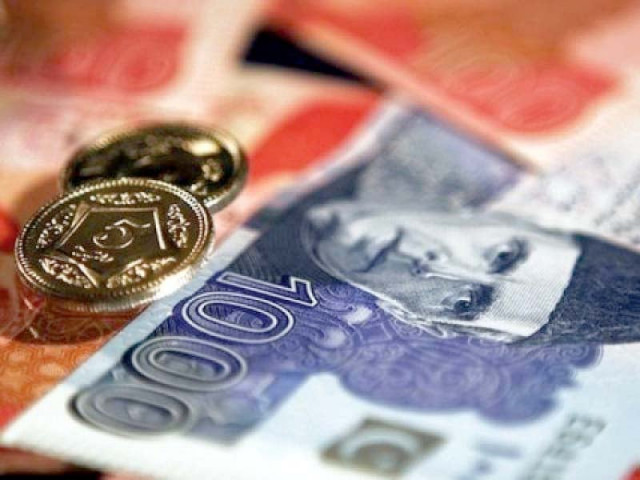Well-off provinces get more loans
Economic activities in these regions funded by economically backward provinces

Pakistan’s two economically backward provinces, Khyber-Pakhtunkhwa (K-P) and Balochistan, are funding economic activities and job creation in two well-off provinces, as banks are lending back only 38% of the deposits received from these neglected provinces.
Punjab and Sindh are receiving 78% and 104% respectively more loans than the bank deposits generated from these two provinces, showed figures shared by the State Bank of Pakistan (SBP) with the Senate Standing Committee on Finance on Tuesday.
The complete neglect of provinces highlights prevailing inequalities, which Standing Committee on Finance Chairman Senator Farooq H Naek described as violation of Article 25 of the Constitution.
As of December 2019, banks received Rs123.5 billion in deposits from K-P but gave only Rs48.6 billion or 39% in loans, according to the central bank statistics. In terms of its share in total loans of Rs5.13 trillion, K-P received only 0.98% of the total loans the commercial banks extended by December 2019.
Compared to the only 1% share in loans, K-P’s share in total deposits of the banking system was over 4%.
Banks received deposits of Rs51.8 billion from Balochistan but gave loans of Rs17.3 billion, which was only 33% of the deposits generated from the province.
The share of the country’s largest province in terms of area was only 0.33% in the total loans the banking sector disbursed by December. Balochistan’s share in total deposits was 1.7%. Figures were very drastic, discriminatory and showed disparity in economic development, said Senator Mohsin Aziz of the Pakistan Tehreek-e-Insaf (PTI), who brought up the issue for discussion as part of agenda.
“K-P and Balochistan shielded Pakistan during the past 20 years and today, these two provinces are not considered secure for lending to their people,” remarked Senator Aziz.
The 0.98% share in total loans was lower than what people gave in charity, he said. “This raises question whether this is good enough to generate equal employment opportunities.”
Punjab, which is the most developed province, generated Rs1.34 trillion in deposits but it received Rs2.4 trillion worth of loans from banks, which was 178% of the total deposits, according to the central bank.
Similarly, Sindh gave Rs1.14 trillion in deposits and it received Rs2.33 trillion worth of loans, which was 204% of the deposits, according to the central bank.
“It seems that K-P, Balochistan, erstwhile Fata and Azad Jammu and Kashmir (AJK) are funding economic development in Punjab and Sindh,” said Senator Dr Musaddiq Malik of the Pakistan Muslim League-Nawaz (PML-N). He said the generation of high deposits by small provinces suggested that there was room for economic development.
Malik said the discrimination in lending was prevalent at the district level but the SBP deputy governor said the central bank did not monitor district-wise lending in the country.
SBP Deputy Governor Jameel Ahmad conceded that there was disparity in loan and deposit ratios and the central bank decided to rectify it three years ago. Ahmad said provincial government-owned banks also started doing business at the national level, which affected lending in the respective provinces.
“Borrowers also do not have capacity to borrow,” said the deputy governor.
“The banking system needs a complete overhaul to correct the imbalance between deposit and lending ratios in small provinces,” observed Senator Farooq Naek. He directed the central bank to submit remedial measures in the next meeting to address inequality in lending to the smaller provinces.
“It is violation of Article 25 of the Constitution,” he said.
The federal government, which is the largest borrower, has sidelined the private sector for years by borrowing heavily from banks. With the passage of time, banks have been risk averse and are not venturing into areas that could spark economic growth and create jobs.
“When state is the largest borrower, then banks will not willingly lend to the private sector,” said Senator Ayesha Raza Farooq.
There is a huge potential for promoting corporate and livestock farming in Balochistan but banks are not willing to lend money as they find a trustworthy client in the shape of federal government. K-P has the potential for tourism and mining.
The committee had also called representatives of commercial banks. But their arguments about not giving enough share to the provinces were disappointing, at the very least. Bankers stated that companies having headquarters in Karachi or Lahore were involved in commercial activities in small provinces, which showed their mindset as banks only wanted to lend money to those who were present in big cities, said Malik.
In terms of per capita loans, Punjab’s loans are 15 times greater than Balochistan’s, according to the central bank.
The gap between the lending-to-deposit ratio could be minimised, if the government were to initiate economic activities and development projects such as the China-Pakistan Economic Corridor and development of Gwadar port, stated the central bank.
Published in The Express Tribune, October 14th, 2020.
Like Business on Facebook, follow @TribuneBiz on Twitter to stay informed and join in the conversation.
















COMMENTS
Comments are moderated and generally will be posted if they are on-topic and not abusive.
For more information, please see our Comments FAQ